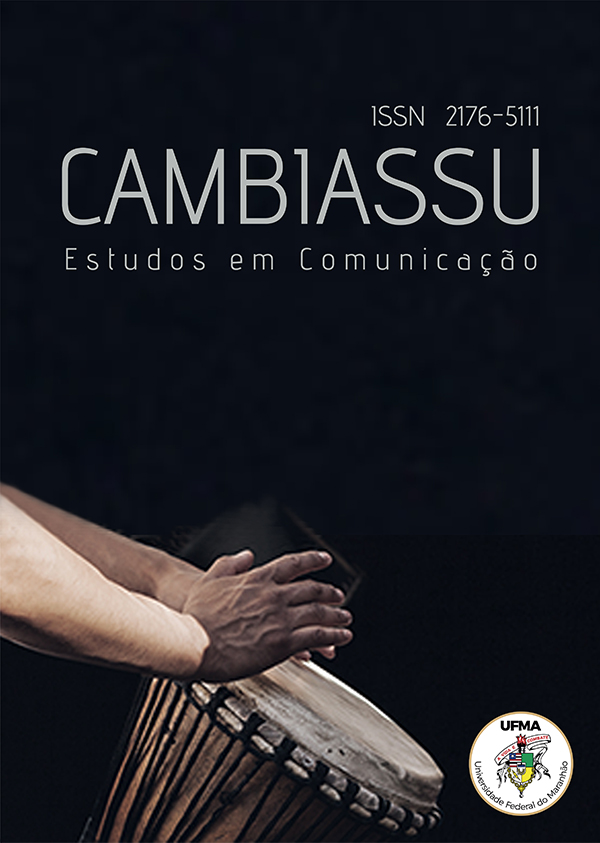The marks of stereotypes in the comic stories of Jerônimo, the king of the sertão
DOI:
https://doi.org/10.18764/2176-5111v19n33.2024.5Keywords:
Stereotypes, Comics, Characters, Cultural product,, Radio soap operasAbstract
The objective of this article is to study and reflect on the stereotyped speech marks in comic books with a Brazilian regionalist theme, taking as the object of analysis the characters from the work Jerônimo, o Rei do Sertão. Illustrated by Edmundo Rodrigues and based on the radio serial created by Moysés Weltman in the first half of the 20th century. This work presents an adventure narrative set in an imaginary cartography of the Brazilian backlands, thus differentiating itself from most radio soap operas and becoming a big hit among children and teenagers. The research method adopted consists of a bibliographical review with an emphasis on studies on the history of Brazilian radio soap operas and comic books of the time, the stereotype applied in communication and its reverberations in everyday life and in the social imaginary. The speech marks in Jerônimo, o Rei do Sertão raise questions about the genuine intention of portraying Brazilian society in an inclusive manner and demonstrate that the work contributed to the perpetuation of racism and patriarchy in its recipients, as mass cultural product.
Downloads
References
ALMEIDA, Silvio. Racismo estrutural. São Paulo: Jandaíra, 2019.
CARDOSO, Athos Eichler. A origem das séries de aventura e mistério da radiofonia
brasileira e sua interação como história em quadrinhos (1940–1959). Anais do XXI
Congresso Brasileiro de Ciências da Comunicação. Universidade Federal de Pernambuco,
CIRNE, Moacy. Uma introdução política aos quadrinhos. Rio de Janeiro: Achiamé,
COUTINHO, Lucia Rocha. Tecendo por trás dos panos: a mulher brasileira nas relações
familiares. Rio de Janeiro: Rocco, 1996.
FREITAS, Richardson Santos de; PAULA, Lorena Tavares de. Do gibi a gibiteca: origem
e gênese de significados historicamente situados. Biblionline, v. 19, n. 1, 2023.
Disponível em: https://orcid.org/0000-0003-1794-7746. Acesso em: 20 jun. 2024.
JÚNIOR, Gonçalo. Um anjo em luz e sombra. In: COLIN, Flávio. As aventuras do Anjo:
Edição de Artista. São Paulo: Figura, 2021.
KULITZ, Layssa Bauer Von. A disputa sobre os quadrinhos: infância, arte e censura
na imprensa brasileira. Teoria e Cultura, vol. 14, no. 1, 2019, pp. 52-69. Disponível em:
https://periodicos.ufjf.br/index.php/TeoriaeCultura/article/view/25907. Acesso em: 19 jun.
MACHADO GARCIA, J.; CARDOSO, J. A. Da cultura de massa à cultura dos dados,
dos rádios ao streaming: um breve histórico sobre as histórias em quadrinhos adaptadas
para o áudio. Revista Latinoamericana de Ciencias de la Comunicación, [S. l.], v. 22, n. 44,
DOI: 10.55738/alaic.v22i44.1061. Disponível em:
http://revista.pubalaic.org/index.php/alaic/article/view/1061. Acesso em: 30 mar. 2024.
MEDEIROS, Ricardo. O que é Radioteatro. Florianópolis, Insular, 2008.
Cambiassu, v. 19, n. 33 – Jan./Jun. 2024
MOTA-RIBEIRO, Silvana. Retratos de mulher — Construções sociais e representações
visuais no feminino. Porto: Campo das Letras, 2005.
RODRIGUES, Edmundo. Jerônimo, o Rei do Sertão. Rio de Janeiro: Editora RGE, 1959.
OSTROWER, F. Criatividade e processos de criação. Petrópolis: Editora Vozes, 1987.
SCHAFER, R. M. The Tuning of the World. Nova York: Random House, 1977.
SODRÉ, Muniz; PAIVA, Raquel. O Império do Grotesco. Editora Mauad, 2014
Downloads
Published
How to Cite
Issue
Section
License
Copyright (c) 2024 Direitos cedidos à revista para a primeira publicação

This work is licensed under a Creative Commons Attribution 4.0 International License.
Direitos autorais Cambiassu: Estudos em Comunicação

Esta obra está licenciado com uma Licença Creative Commons Atribuição 4.0 Internacional.








